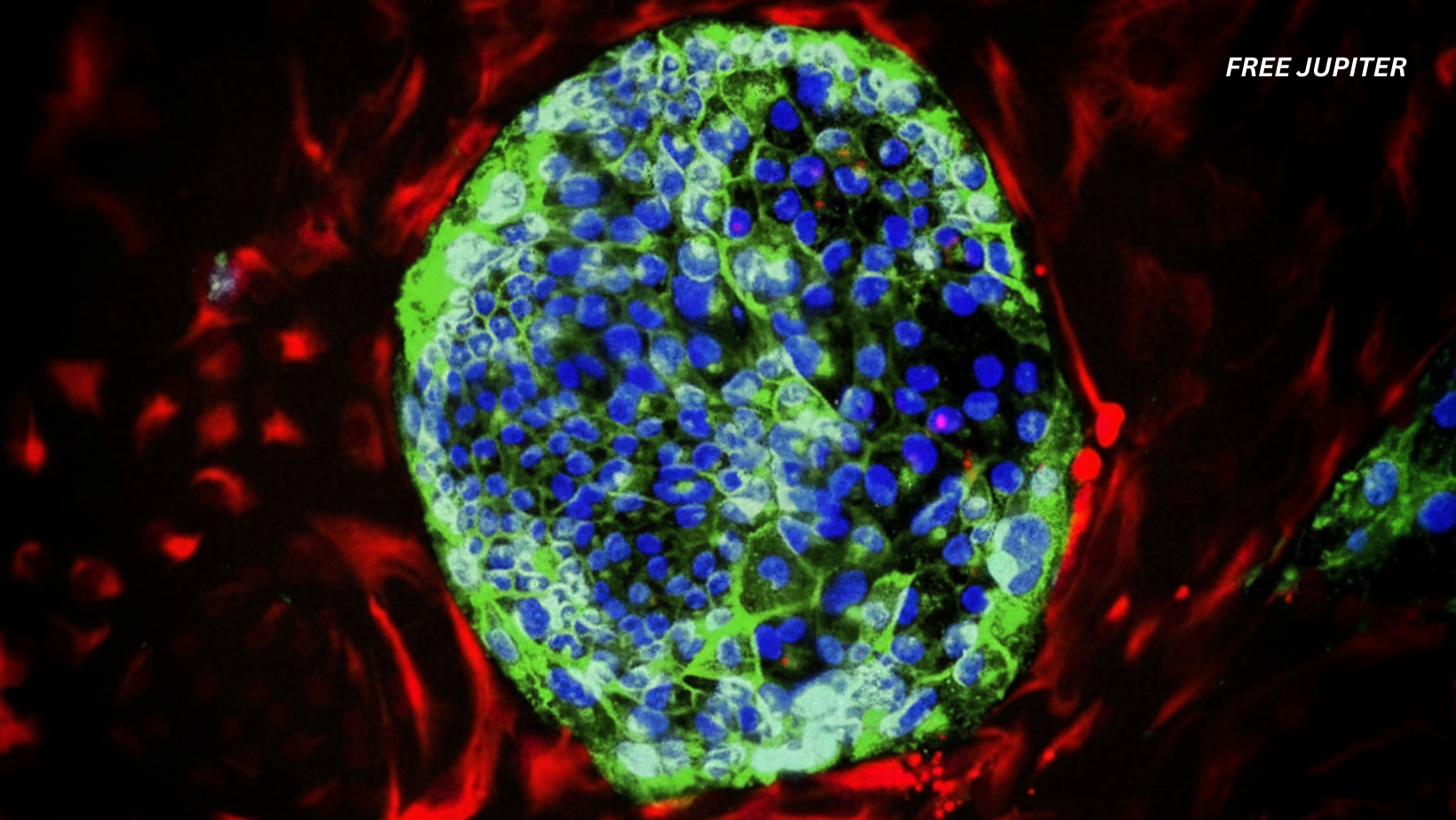Science is often a game of patience. Some discoveries appear in an instant, while others take decades—or even centuries—to reveal themselves. The latest breakthrough falls into the latter category: researchers in Australia have identified a brand-new type of cell that was predicted more than 100 years ago but had never been confirmed—until now.
This newly uncovered cell, dubbed the EndoMac progenitor, appears to play a crucial role in repairing damage in the body. If similar cells are confirmed in humans, the finding could pave the way for treatments that help wounds heal faster and blood vessels grow stronger.
The Long Hunt for a Hidden Cell
Back in the early 20th century, scientists suspected that special stem-like cells might exist in adult mammals—cells capable of generating immune defenders known as macrophages. But despite years of speculation and scattered evidence, no one could actually pin down these elusive players.
Instead, most of the scientific community came to believe that bone marrow was the main factory producing fresh macrophages after birth. Bone marrow is already known as the birthplace of many blood and immune cells, so this assumption made sense at the time.
But as decades passed, cracks appeared in the theory. Evidence showed that bone marrow could not account for all the macrophages scattered throughout the body. The puzzle deepened: if bone marrow wasn’t the sole source, then where were the rest of these essential immune cells coming from?
The new study out of Australia provides a missing piece. Researchers have shown that during early development, some progenitor cells lodge themselves in the aorta—the body’s largest artery. From this hidden location, they quietly persist into adulthood, ready to jump into action when damage or poor circulation occurs.
Read more: First-Ever Recording Captures Black Hole “Kicked” Across Space And Time
Meet the EndoMac Progenitors
So, what exactly are EndoMac progenitors? Think of them as versatile builders with a dual skillset. When the body signals distress, they can transform into two different kinds of cells:
- Macrophages – immune system “clean-up crews” that gobble up harmful invaders and help coordinate healing.
- Endothelial cells – the structural lining of blood vessels, which act as highways for nutrients and oxygen.
This dual ability makes them especially valuable for repairing injuries and restoring blood flow. In essence, they can both rebuild the roads (blood vessels) and hire the maintenance workers (macrophages) needed to fix the damage.
Testing the Cells in Action
The discovery didn’t happen overnight. It took nine years of careful study, isolating cells from mice, nurturing them in labs, and then testing their abilities in real-world conditions.
One of the most striking experiments involved creating a “diabetic wound” in a mouse by restricting blood flow in its hind leg. Such wounds are notoriously difficult to heal, both in animals and in humans.
When researchers injected EndoMac progenitor colonies into these mice, the results were dramatic. Within just two weeks, the injured tissue had begun to recover. The transplanted cells had transformed into macrophages and endothelial cells, restoring circulation and accelerating healing.
For scientists, this was a powerful confirmation: EndoMac progenitors are not just theoretical—they can actively make a difference in the healing process.
Read more: Scientists Tested Whether Gut Feelings Can Predict the Future — The Results Are Startling
Why Macrophages Matter
To understand why this discovery matters, it helps to zoom in on the macrophage. These cells are among the immune system’s most versatile defenders. They first appear in embryos and remain a constant presence throughout life.
Their jobs include:
- Defending against pathogens – macrophages engulf and digest harmful bacteria, viruses, and debris.
- Promoting tissue repair – they release signals that encourage new growth when damage occurs.
- Shaping development – in embryos, they even help guide the formation of tissues and organs.
However, the supply of macrophages is not infinite. They need ways to renew themselves across a lifetime. For years, scientists debated whether the body had hidden reserves of macrophage-producing stem cells. The discovery of EndoMac progenitors finally strengthens the case that such a reserve does indeed exist.
Why Bone Marrow Wasn’t the Full Story
Bone marrow has long been celebrated as the hub of blood and immune cell production. But recent research has shown that its influence is more limited than once thought. It supplies macrophages to a few specific tissues—such as the skin, the gut, and the heart—but cannot explain the presence of macrophages in all tissues of the body.
This gap left scientists scratching their heads. If bone marrow wasn’t handling the workload, something else must be stepping in. EndoMac progenitors now appear to fill that gap, suggesting the body had an overlooked system for immune renewal all along.
The Immune System’s Stealth Players
One of the most intriguing aspects of EndoMac progenitors is their ability to avoid detection by the immune system. Unlike many other cells, they don’t carry the usual “tags” that mark cells as belonging to a specific body.
This makes them stealthy guests: they can be transplanted into another organism without triggering the immune system to attack them as foreign. In practical terms, this could mean they have potential for therapies where rejection is usually a big obstacle.
Implications for Human Health
Although the current findings come from mice, the research team is already investigating whether similar cells exist in humans. Early signs suggest that the answer may be yes, though results have not yet been published.
If confirmed, the implications could be profound. EndoMac progenitors could offer new hope for:
- Chronic wounds – especially in people with diabetes, who often struggle with slow-healing injuries.
- Poor circulation – conditions where tissues don’t get enough blood flow could benefit from the cells’ ability to create new vessels.
- Regenerative medicine – therapies could one day harness these cells to repair damage after surgery, injury, or disease.
While it’s still early days, the potential for real-world treatments is generating considerable excitement.
A Glimpse Into the Future of Healing
The discovery of EndoMac progenitors is more than just a new chapter in immunology—it’s a reminder of how much the body still hides from us. Cells that were once only hypothesized have now been revealed, showing that science still has surprises tucked away in plain sight.
Looking forward, researchers aim to map exactly how these cells function in humans, how they can be safely harnessed, and whether they might serve as the foundation for new therapies. If the promise holds, what started as a 100-year-old scientific hunch could one day help countless patients heal faster and more effectively.
Read more: Scientists Successfully Summon a Massless ‘Demon’ Particle
Conclusion: Science, Patience, and Possibility
Discoveries like this remind us that science often works on long timelines. What seems like a dead-end theory in one era can become a groundbreaking reality in another.
The EndoMac progenitor cell may have been quietly hiding in the body for generations, but now that it has stepped into the scientific spotlight, it could transform medicine as we know it. From healing stubborn wounds to improving circulation, its potential reaches far beyond the laboratory.
In the grand puzzle of biology, this long-awaited piece has finally been placed. And in doing so, it opens the door to new questions, new therapies, and a renewed appreciation for the hidden wonders of the human body.
Featured image: Gemini Recreation.
Friendly Note: FreeJupiter.com shares general information for curious minds. Please fact-check all claims and double-check health info with a qualified professional. 🌱










